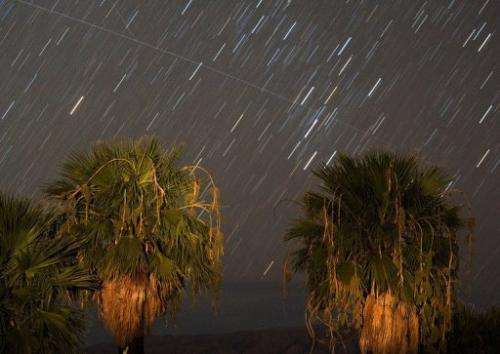'Tears of St. Lawrence' meteor shower to peak at weekend

The annual Perseid meteor shower -- dubbed "the tears of St. Lawrence" in honour of a martyred Christian saint -- reaches its peak this weekend, astronomers said on Friday.
Cloud-free skies permitting, the show of shooting stars should be an above-average spectacle this year as the Moon is in a waning, crescent phase and so will cast relatively little light.
The Perseids are named after the constellation of Perseus from which they appear to fly out.
The meteors come from dust shed by the comet Swift-Tuttle, which swings around the Solar System every 130 years, depositing the material in Earth's orbit as it nears the Sun.
As Earth races around the Sun, the grains smash into the atmosphere at around 60 kilometres (37 miles) per second, burning up in streaks of light.
Occasionally, longer and brighter streaks are seen, and these come from pea- or marble-sized remnants of the comet.
The shower is best visible in the northern hemisphere, and should reach a peak between 1200 GMT and 1430 GMT on Sunday, according to the International Meteor Organisation (www.imo.net/).
St. Lawrence was an early Christian deacon, Laurentius, who was tortured to death by the Romans in AD 258, and whose saint's day of August 10 coincides with the Perseids buildup.
According to legend, Laurentius was martyred outdoors on a grill. During his suffering, he is said to have quipped defiantly to his persecutors: "Turn me over -- I am done on this side!"
He is the patron saint of cooks.
(c) 2012 AFP


















